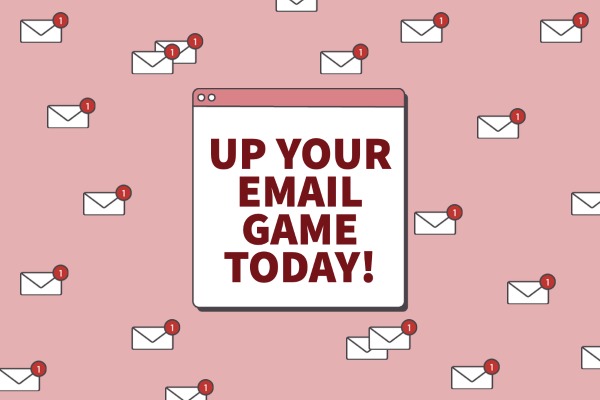By Skylar Trostinsky
If you’ve ever met me in person, you know I have quite the personality. It’s much easier for me (and many other professionals) to talk with someone face-to-face. This way we can effectively spread information, view body language, and make connections! Alas, this now virtual world has been inundated with digital communication and that means we must learn how to be professional in person and through text, too.
Communicating with an agency, client or representative can be a daunting task. Do you keep it dim and straight to the point? Or do you add a bit of flare and personality? I mean, you want to express who you are, especially when you work in public relations, right? With a semester of email chains, project delegation and more under my belt, I have learned a few tips and tricks for communicating online.
- Set Goals for Emails
Staying organized is key to receiving useful documents and information. Before typing emails to agencies, clients or coworkers it’s important to set goals within the communication chain. That person is just as busy as you, so do them and yourself a favor by creating an outline of who you are writing to, what you need from the recipient and what you want them to respond with.
- Use Your Subject Line!
When considering the workload your recipient may be dealing with, it’s imperative to use brief, catchy subjects that include keywords. With this, your reader will know exactly what to expect when clicking on your email or maybe even be tempted to respond.
- Be Clear and Concise
Avoid using an excessive amount of words in emails, especially when providing instructions. Separate thoughts, questions and suggestions with paragraph breaks, bullet points, etc. to highlight information. This also allows recipients to quickly skim through text and find their to-do’s!
Utilize appropriate punctuation and refrain from using ALL CAPS. Although it’s OK to bold and capitalize some notes, you never want the addressee to feel like you are shouting at them.
- Be Polite and Be Yourself
Here comes the question of whether personality is necessary, or appropriate, in an email chain. Although clarity and conciseness are imperative aspects to communication, you should never hide your character from anyone! It’s just critical that you remain professional and consistent with a soft, inviting tone. Check out READCITY’s “5 Clever Ways To Give Your Business Emails Personality” for more tips.
- Proofread, Proofread, Proofread!
As a PR professional, one of the worst things you can do when communicating with other experts is to send emails without reading them over. Typos may send negative messages about you or your organization and generally come off as unprofessional.
A way to make sure your emails are grammatically correct and have been spell checked is by writing them in a separate document first. Doing this has helped me draft numerous messages, with different formats to ultimately choose which version will best convey my points.
“Although clarity and conciseness are imperative aspects to communication, you should never hide your character from anyone! It’s just critical that you remain professional and consistent with a soft, inviting tone.”
-Skylar Trostinsky
Professional communication doesn’t end in email chains! Further your credibility, express yourself and improve relationships by taking skills such as goal setting, clarity and politeness to group and one-on-one meetings. Email away!
Resources:




